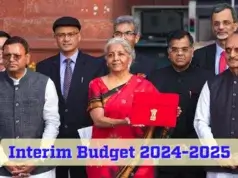 It is vital for the government and the municipalities to show a great deal of urgency in dealing with the critical issue of waste management. As an optimist I hope we will get our act together to see India set the gold standard in waste management over the next decade and allow the citizens of this country to live in a clean and healthy environment, notes Dr. G.V. Rama Krishna, Chairman & Managing Director, Selco International Ltd.
It is vital for the government and the municipalities to show a great deal of urgency in dealing with the critical issue of waste management. As an optimist I hope we will get our act together to see India set the gold standard in waste management over the next decade and allow the citizens of this country to live in a clean and healthy environment, notes Dr. G.V. Rama Krishna, Chairman & Managing Director, Selco International Ltd.
Municipal solid waste management rules were notified in the year 2000 by the Ministry of Environment and Forests. But even in 2013 garbage disposal continues to be a gargantuan problem in the country. JNNURM funds were allocated to a few projects but the model of funding has not been able to sustain the projects.
Problems faced by Bangalore recently due to open dumping of garbage are well documented. The problem was so intense that it was included as a key point in the manifesto of every notable political party in the recent elections in Karnataka. This is a reflection of not just Bangalore but of most cities and towns across India. NIMBY attitude hasn’t helped the sector either.
Scientific disposal of garbage is a challenge anywhere in the world. Typically, countries with rapid urbanisation start generating more garbage per capita and eventually realise that unscientific landfilling is a huge destruction of economic value – by not recovering recyclables/energy from waste and by increasing usage of prime land for landfill. But a few European countries have set high standards in proper waste management (e.g. UK, Denmark, Sweden) and a few developing countries (e.g. China) have adopted these best practices. In spite of having created scientific disposal facilities at an R&D scale on the lines of UK, Denmark and Sweden way back in 1999, India has been a laggard in aggressively adopting these best practices.
The solution
Based on industry leading best practices, below is what India needs to do to achieve gold standard in waste management:
Reduce, reuse and recycle: 5-10 per cent of garbage generated can be reduced by increasing public awareness about the benefits of reduce and reuse (e.g. shopping malls charging for plastic bags and encouraging public to carry reusable bags).
Also, garbage has a lot of recyclables in it (e.g. plastic, paper, metal). These recyclables are currently being separated by disorganised groups of ragpickers with variable efficiency. Municipalities should encourage source segregation by distributing different coloured bins for recyclables. This should be made mandatory right from primary school, so kids at an early age start imbibing the right habits, carry these habits home and encourage their elders to inculcate the discipline to source segregate garbage at home.
Collected in an organised fashion, recyclables from garbage can act as a big source of revenue for the municipality/waste management company.
Privatisation: Most developed countries have high rates of privatisation of waste management. While privatisation certainly leads to increase in accountability, it is important for municipalities to create the right business models to attract investment into the sector.
In the two parts of the supply chain, C&T (Collection and Transportation) and P&D (Processing and Disposal), our municipalities have traditionally done C&T and are used to dumping waste in unscientific landfills. To ensure a private player has a sustainable business model doing either C&T or P&D or both, reasonable tipping fees (i.e. fees to collect transport and dispose waste scientifically) to ensure minimum profitability should be provided by the municipality. In developed countries, tipping fees ranges from $50-100 per ton and even developing countries like China pay tipping fees for both C&T and P&D.
With each household paying Rs.10-50 per month as “garbage fee” (or as part of property tax) depending on the number of people/household, it could provide enough revenue for the municipalities to provide tipping fees to the waste management companies. A small fee to maintain a clean and healthy environment is a concept most educated households will be quite open to, especially given the fact that status quo will only increase incidence of dangerous diseases like dengue and malaria apart from groundwater contamination near the landfills.
P&D technology: One doesn’t need to reinvent the wheel on which technology would best suit our garbage disposal needs while several successful models already exist in Europe and China. While there are several promising technologies coming up, waste to energy (WTE) is the only proven technology to instantly reduce volume of waste and to recover energy from garbage. There are over 300 plants in Europe and China with operational success for over 20 years.
WTE technology, which started over 40 years ago with pure incineration of garbage, was criticised initially for emitting poisonous gases. But the technology has evolved over the years with stringent mechanisms established to control emission of harmful gases. European norms for emission control have set the standard for clean and green WTE plants achieving the triple objective of instant volume reduction, energy recovery and low emissions. Few other promising technologies with even lower emissions (e.g. pyrolysis) and gasification are all being experimented, but have not been proven yet for heterogeneous waste like Indian garbage.
In addition to WTE, composting can be also be used to treat wet organic waste in small quantities.
When India set up its first WTE project in Hyderabad way back in 1999, China was still planning to set up such a unit. Today, China has more than 100 WTE units while India has less than 20 operational units. Even our existing units are suffering for want of government support e.g. no/low tipping fees, no preferred tariff for electricity from garbage, no revenue from recyclables etc. Few units not producing electricity but dependent on composting as the only disposal technique are getting tipping fees.
Though composting is good for wet organic waste, there is limited demand for the product generated. Thereby a lot of garbage (even after making compost) is dumped into the landfill. Only in WTE power generation units, instant garbage disposal is possible on the same day and the local municipal corporations and the state governments should work in tandem with the private operators to ensure that garbage is disposed and not dumped in the landfills.
Generation-based incentive: GBI has been quite successful in driving growth in wind power installations across the country. Similar GBI for WTE could provide the shot in the arm for the sector. Municipal corporations or Ministry of New and Renewable Energy could provide this GBI to attract investors. This is a much better incentive compared to the capital subsidy model currently followed by MNRE, which hasn’t had any impact so far. In the latest budget proposed by the Government of India, importance was given to the disposal of garbage disposal which is a welcome sign; details are yet to be framed by Indian Renewable Energy Development Agency Ltd. While it is expected that the government may provide access to low interest debt through IREDA for WTE projects, it remains to be seen if GBI is implemented as well.
It is now vital for the government and the municipalities to show a great deal of urgency in dealing with this important issue of waste management. As an optimist I hope we will all get our act together to see India set the gold standard in waste management over the next 10 years thereby allowing the citizens of this country to live in a clean and healthy environment.












I go through your website its very good and we are also having similar website you can visit us.
Bain Marie containers Bangalore, Bain Marie in Bangalore, Chinese range in Bangalore